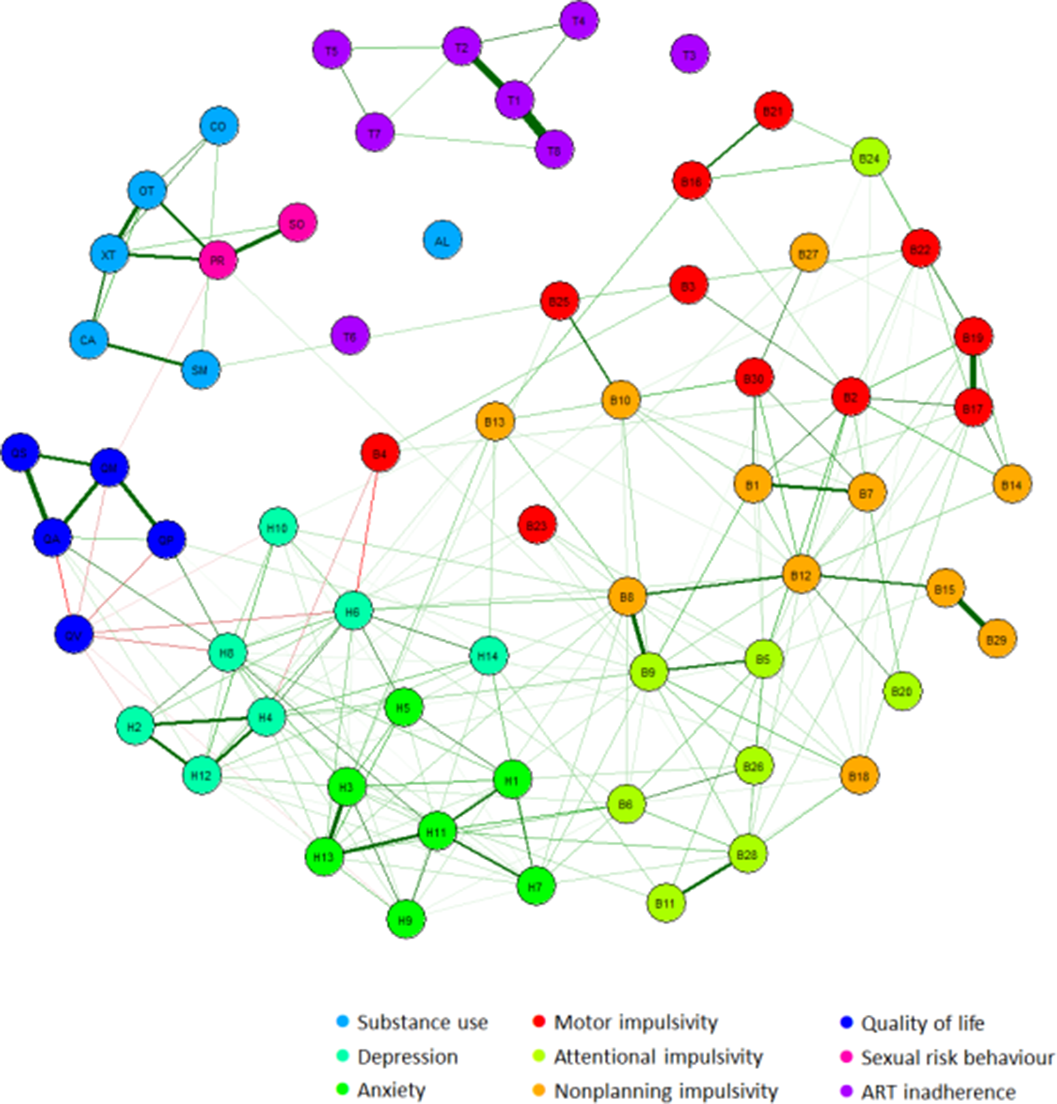62 results
Temporal relationships between latent symptoms in psychosis: a longitudinal experience sampling methodology study
-
- Journal:
- European Psychiatry / Volume 66 / Issue S1 / March 2023
- Published online by Cambridge University Press:
- 19 July 2023, pp. S112-S113
-
- Article
-
- You have access
- Open access
- Export citation
Psychiatric symptoms in people living with HIV: prevalences, interactions and consequences
-
- Journal:
- European Psychiatry / Volume 66 / Issue S1 / March 2023
- Published online by Cambridge University Press:
- 19 July 2023, pp. S519-S520
-
- Article
-
- You have access
- Open access
- Export citation
Learning second language morphosyntax in dialogue under explicit and implicit conditions: An experimental study with advanced adult learners of German
-
- Journal:
- Bilingualism: Language and Cognition / Volume 26 / Issue 5 / November 2023
- Published online by Cambridge University Press:
- 21 March 2023, pp. 984-997
-
- Article
-
- You have access
- Open access
- HTML
- Export citation
P.094 The three sisters of fate: Genetics, pathophysiology and outcomes of animal models of neurodegenerative diseases
-
- Journal:
- Canadian Journal of Neurological Sciences / Volume 49 / Issue s1 / June 2022
- Published online by Cambridge University Press:
- 24 June 2022, pp. S32-S33
-
- Article
-
- You have access
- Export citation
Schema therapy for violent PD offenders: a randomized clinical trial
-
- Journal:
- Psychological Medicine / Volume 53 / Issue 1 / January 2023
- Published online by Cambridge University Press:
- 15 June 2021, pp. 88-102
-
- Article
-
- You have access
- Open access
- HTML
- Export citation
Contents
-
- Book:
- Complementarity, Catalysts, Compliance
- Published online:
- 16 April 2020
- Print publication:
- 23 April 2020, pp ix-x
-
- Chapter
- Export citation
Index
-
- Book:
- Complementarity, Catalysts, Compliance
- Published online:
- 16 April 2020
- Print publication:
- 23 April 2020, pp 328-338
-
- Chapter
- Export citation
Copyright page
-
- Book:
- Complementarity, Catalysts, Compliance
- Published online:
- 16 April 2020
- Print publication:
- 23 April 2020, pp vi-vi
-
- Chapter
- Export citation
1 - Introduction
-
- Book:
- Complementarity, Catalysts, Compliance
- Published online:
- 16 April 2020
- Print publication:
- 23 April 2020, pp 1-24
-
- Chapter
- Export citation
5 - Compliance and Performance
- from Part II - The ICC in Uganda, Kenya and the Democratic Republic of Congo
-
- Book:
- Complementarity, Catalysts, Compliance
- Published online:
- 16 April 2020
- Print publication:
- 23 April 2020, pp 149-192
-
- Chapter
- Export citation
8 - Conclusions and Recommendations
- from Part II - The ICC in Uganda, Kenya and the Democratic Republic of Congo
-
- Book:
- Complementarity, Catalysts, Compliance
- Published online:
- 16 April 2020
- Print publication:
- 23 April 2020, pp 267-297
-
- Chapter
- Export citation
Part II - The ICC in Uganda, Kenya and the Democratic Republic of Congo
-
- Book:
- Complementarity, Catalysts, Compliance
- Published online:
- 16 April 2020
- Print publication:
- 23 April 2020, pp 147-297
-
- Chapter
- Export citation
2 - Tracing an Idea, Constructing a Norm
- from Part I - The ICC and Complementarity: Evolutions, Interpretations and Implementation
-
- Book:
- Complementarity, Catalysts, Compliance
- Published online:
- 16 April 2020
- Print publication:
- 23 April 2020, pp 27-67
-
- Chapter
- Export citation
Table of Statutes and Statutory Instruments
-
- Book:
- Complementarity, Catalysts, Compliance
- Published online:
- 16 April 2020
- Print publication:
- 23 April 2020, pp xxi-xxii
-
- Chapter
- Export citation
Dedication
-
- Book:
- Complementarity, Catalysts, Compliance
- Published online:
- 16 April 2020
- Print publication:
- 23 April 2020, pp vii-viii
-
- Chapter
- Export citation
Select Bibliography
-
- Book:
- Complementarity, Catalysts, Compliance
- Published online:
- 16 April 2020
- Print publication:
- 23 April 2020, pp 298-327
-
- Chapter
- Export citation
3 - Mirror Images? Complementarity in the Courtroom
- from Part I - The ICC and Complementarity: Evolutions, Interpretations and Implementation
-
- Book:
- Complementarity, Catalysts, Compliance
- Published online:
- 16 April 2020
- Print publication:
- 23 April 2020, pp 68-103
-
- Chapter
- Export citation
4 - Leveraging The Hague
- from Part I - The ICC and Complementarity: Evolutions, Interpretations and Implementation
-
- Book:
- Complementarity, Catalysts, Compliance
- Published online:
- 16 April 2020
- Print publication:
- 23 April 2020, pp 104-146
-
- Chapter
- Export citation
6 - Competing, Complementing, Copying
- from Part II - The ICC in Uganda, Kenya and the Democratic Republic of Congo
-
- Book:
- Complementarity, Catalysts, Compliance
- Published online:
- 16 April 2020
- Print publication:
- 23 April 2020, pp 193-237
-
- Chapter
- Export citation
Preface
-
- Book:
- Complementarity, Catalysts, Compliance
- Published online:
- 16 April 2020
- Print publication:
- 23 April 2020, pp xxv-xxxvi
-
- Chapter
- Export citation




